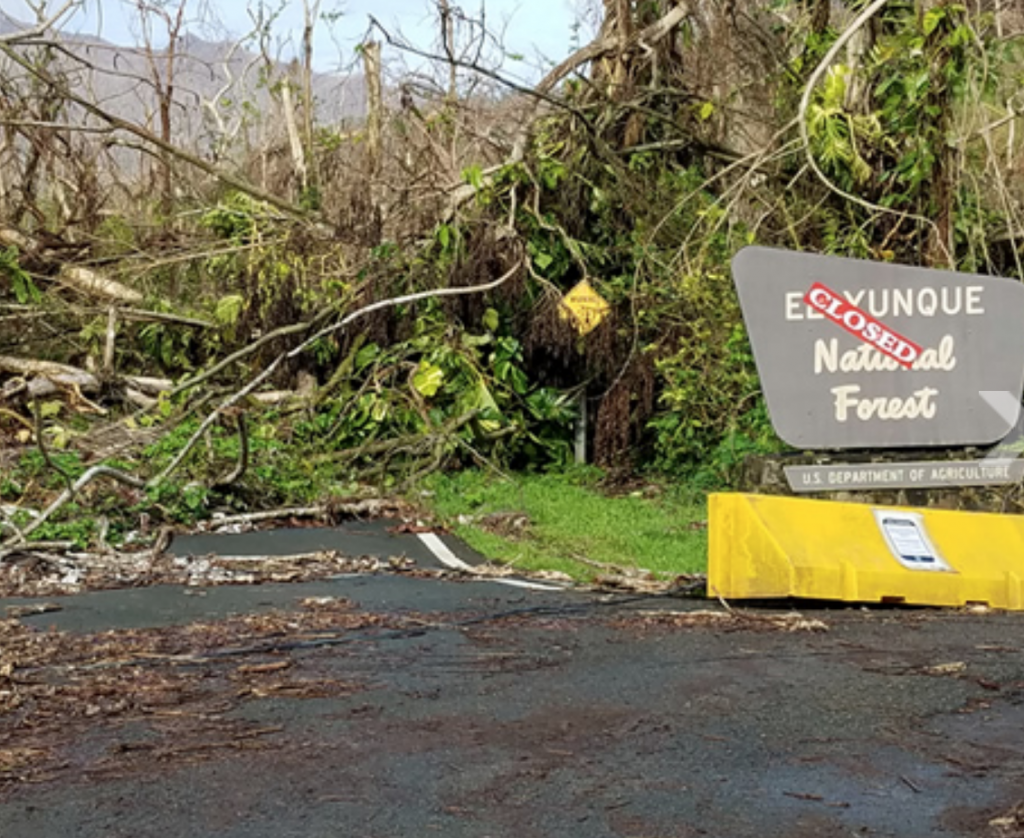Students in the Luquillo Schoolyard Project in Puerto Rico are jamming on data. Large, long-term environmental data! And our free, online tool CODAP (Common Online Data Analysis Platform) joined their Data Jam to help students visualize and explore data in an inquiry-oriented way.
 El Yunque National Forest, the only tropical rainforest in the U.S. National Forest System, was hit hard in 2017 by Hurricane Maria. (Photo courtesy of U.S. Forest Service.)
El Yunque National Forest, the only tropical rainforest in the U.S. National Forest System, was hit hard in 2017 by Hurricane Maria. (Photo courtesy of U.S. Forest Service.)
Data has become increasingly critical to understanding countless issues from business and politics to medicine and the environment. It’s hard to imagine a profession in the future that will not require data analysis skills. But while the Next Generation Science Standards (NGSS) feature data analysis and interpretation as part of the science and engineering practices, it’s hard for teachers to develop realistic activities using large datasets.
The Luquillo Schoolyard Project has developed a unique way to engage teachers and their students in local environmental issues while learning about big data, science, and research—and they draw and sing, too—all part of a Data Jam!
Data Jam is an outreach project of the National Science Foundation-funded Luquillo Long-Term Ecological Research (LTER) program in the El Yunque tropical rainforest. Students in a Data Jam work together on real data analysis projects, learning to formulate research questions, explore, analyze, and summarize environmental data, and come up with interpretations.
 Students using CODAP to investigate environmental data from El Yunque National Forest during a Data Jam. (Photo: Noelia Báez Rodríguez)
Students using CODAP to investigate environmental data from El Yunque National Forest during a Data Jam. (Photo: Noelia Báez Rodríguez)
Having recently experienced a drought followed by a Category 4 hurricane, Puerto Rico’s middle and high school students know firsthand the impact of weather on the environment. “It’s extremely impressive how resilient these kids are,” said Steven McGee, research associate professor of learning sciences at Northwestern University and president of The Learning Partnership, during a recent Concord Consortium data science education webinar. “We have kids whose school doesn’t have electricity, but they’re so devoted to science that they are coming out to the rainforest to do research.”
Led by teachers who have completed professional development training, students dive into authentic long-term research data from the Luquillo LTER, the Luquillo Critical Zone Observatory, and the U.S. Geological Survey. “Giving students real scientific datasets to explore introduces the messiness of data analysis that motivates the reasons why students should be engaging in basic data analysis strategies,” says McGee. “If students are only exposed to artificial datasets, the learning of basic analysis techniques seems like school exercises.”
Originally the project used Excel to created graphs, but they recently switched to CODAP, our web-based data analysis and visualization tool. “CODAP provides a platform for students to explore different ways to analyze the data,” McGee explains. “It’s easy for students to generate different types of graphs as a means to examine the data from different perspectives. This feature hopefully enables students to reflect on the type of information that can be gleaned from different types of graphs.”
 A student presents her research data at the annual student symposium at the University of Puerto Rico. (Photo: Carla López Lloreda)
A student presents her research data at the annual student symposium at the University of Puerto Rico. (Photo: Carla López Lloreda)
Successful Data Jam projects present their findings at a public symposium and poster session at the University of Puerto Rico. “A large number of scientists involved with the LTER program come and interact with the kids,” said Noelia Báez Rodríguez, coordinator of the Luquillo LTER Schoolyard program, during the webinar. Students also develop creative ways to communicate their results, including skits, drawings, short stories, poems, and songs—even a rap.*
If their goal is to get students interested in STEM careers, the Luquillo Schoolyard Project has a lot to jam about. Even in the midst of an ongoing environmental crisis, they’re getting students and teachers excited about data science. We’re proud to be a part of their success.
*By students Paul Ortiz and Jonathan Rodriguez as part of the 2016 Data Jam.